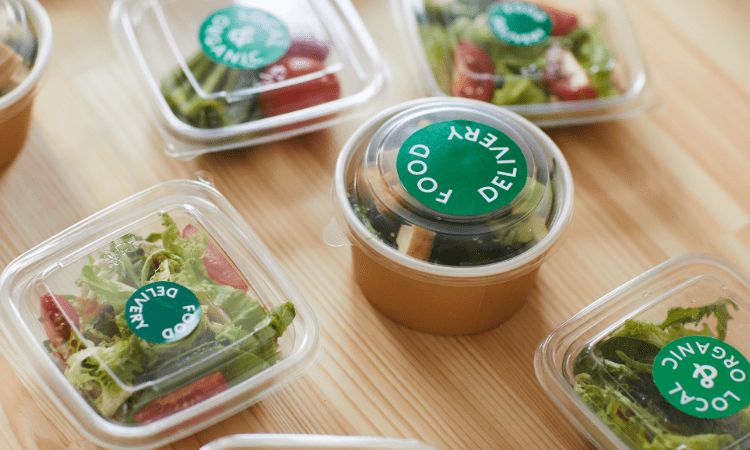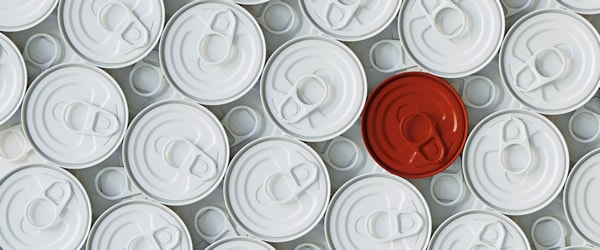Plastic

Plastic in Food Contact: Mitigate Risks, Meet Regulations, Maintain Consumer Confidence
From lightweight water bottles to durable food containers, plastics have become ubiquitous in our daily lives, particularly in how we store, transport, and consume food. Whether it's the convenience of a grab-and-go yogurt cup, the freshness maintained by a plastic-wrapped salad, or the extended shelf life of frozen meals in plastic packaging, these materials play an essential role in our modern food system.
Key Regulations for Plastic
Navigating the global landscape of plastic food contact material regulations requires a nuanced understanding of the specific requirements in different regions, with the European Union, United States, and China representing key markets with distinct legislative frameworks.
European Union Regulations
The European Union (EU) boasts one of the most stringent regulatory frameworks for food contact materials globally, including plastics. The foundation of this framework is Regulation (EC) No 1935/2004, which establishes general safety principles for all food contact materials, mandating that they must not endanger human health, alter food composition unacceptably, or deteriorate food sensory characteristics.
For plastics in particular, the EU's Plastics Regulation (EU) No 10/2011 covers them in more detail. This regulation is crucial to ensure that only safe and approved substances come into contact with food. It defines a list of substances permitted for use in plastics, establishes specific migration limits (SMLs) for these substances, and outlines test methodologies to assess compliance. It also sets a general limit for non-volatile substances(OM). With these tests, called specific migration and total migration, migration tests are carried out for different periods of time, depending on the storage conditions of the products. In addition to restrictions such as primary aromatic amines and metals, the quantities of many substances such as terephthalic acid used as monomers, vinyl chloride, acrylonitrile, and BHT used as antioxidants are made and evaluated under specified conditions.
Furthermore, the EU places strong emphasis on Good Manufacturing Practices (GMP) through Regulation (EC) No 2023/2006. This regulation sets out hygiene requirements and quality control measures for FCM production, aiming to minimize contamination risks and ensure consistent product safety. Recent updates, like Regulation (EU) 2022/1616 on recycled plastic FCMs, highlight the EU's ongoing commitment to adapting its regulations to address emerging concerns and new technologies in the field of food contact materials.
The LFGB and BfR – Germany's Framework for Safety
While the European Union's regulations provide a robust framework for food contact material safety, some countries, like Germany, opt for even stricter standards. The German Federal Institute for Risk Assessment (BfR) issues recommendations that often go beyond EU requirements, aiming to minimize potential risks further.
In Germany, the Lebensmittel-, Bedarfsgegenstände- und Futtermittelgesetzbuch (LFGB), or the Food, Commodities and Feed Code, governs food contact materials. The Federal Institute for Risk Assessment (BfR) plays a crucial role in supporting the LFGB by providing scientific recommendations on the safety of FCMs.
A great example of this lies in the BfR's recommendations for polyethylene, a plastic commonly used in food packaging. While the EU's Plastics Regulation (EU) No 10/2011 focuses on regulating monomers and additives, BfR looks more deeply at catalyst residues. In particular, the BfR sets limits on the residual amounts of certain metals such as chromium, vanadium, zirconium and hafnium in finished polyethylene products. These limits are not clearly defined in EU regulations, which demonstrates Germany's proactive approach to protecting consumer health.
French Legislation on Plastic Materials in Contact with Food
In France, food contact materials (FCM) are regulated by a combination of European Union (EU) and national regulations. The EU's Framework Regulation (EC) No 1935/2004 sets the foundation, establishing general safety and inertness principles for FCMs. Specific measures for plastic FCMs are outlined in Regulation (EU) No 10/2011
France has implemented the EU regulations into its national law through various decrees and orders. The French Agency for Food, Environmental and Occupational Health & Safety (ANSES) plays a key role in enforcing these regulations and providing scientific advice on FCM safety.
U.S. Legislation on Food Contact Plastics
Food contact plastics in the United States are strictly regulated by the Food and Drug Administration (FDA) to ensure the safety of consumers. Any substance used in plastics that will come into contact with food must first undergo a thorough safety assessment by the FDA.
Most new substances used in food contact plastics must be submitted to the FDA through the Food Contact Notification (FCN) program for review. If deemed safe, the substance is cleared for use and listed on the FDA's inventory.
Specific regulations for food contact plastics can be found in Title 21 of the Code of Federal Regulations (CFR), particularly in parts 170-199, with key sections including:
21 CFR 177: Regulations specific to polymers, including many plastics used in food packaging.
21 CFR 178: Regulations for indirect food additives, including substances used in the manufacture of food contact plastics.
For example, CFR 21 Part 177.1010 contains test procedures and restrictions regarding Acrylic and Modified Acrylic, such as total non-volatile extracts, potassium permanganate, UV absorbance value (water/heptane), etc. Manufacturers and distributors are responsible for ensuring their products comply with these regulations. The FDA's primary goal is to protect public health by ensuring that food contact plastics are safe for their intended use.
China's GB Standards for Food Contact Plastics
GB 4806 is a collection of standards that cover a wide range of food contact materials and articles, with a particular focus on plastics. It outlines:
- Specific requirements for different types of plastic materials: This includes standards for polyethylene (PE), polypropylene (PP), polystyrene (PS), and many others.
- Migration limits for chemicals: GB 4806 sets strict limits on the amount of chemicals that can migrate from plastic packaging into food. These limits are based on rigorous scientific assessments to ensure consumer safety.
- Testing methods: The standards detail specific test methods that must be used to assess the compliance of plastic materials with the safety requirements.
Our Commitment to Food Safety Testing
At Nanolab Laboratory Group,we prioritize the safety and quality of food contact materials. We offer comprehensive testing services to ensure compliance with international and regional regulations. Our expertise includes:
EN 1186: This series of European standards evaluates the migration of constituents from plastic materials and articles into food simulants.
EN 13130: This standard specifically addresses the migration of substances from plastic materials and articles into aqueous food simulants.
China GB 31604 series: These standards outline the methods for testing the migration of substances from various food contact materials in China, including plastics.
FDA methods: We adhere to the testing methods specified by the U.S. Food and Drug Administration (FDA) for assessing the safety of food contact substances.
Regulation-specific analysis: Our team is well-versed in the specific testing requirements outlined in various global regulations, ensuring your products meet the highest safety standards.

